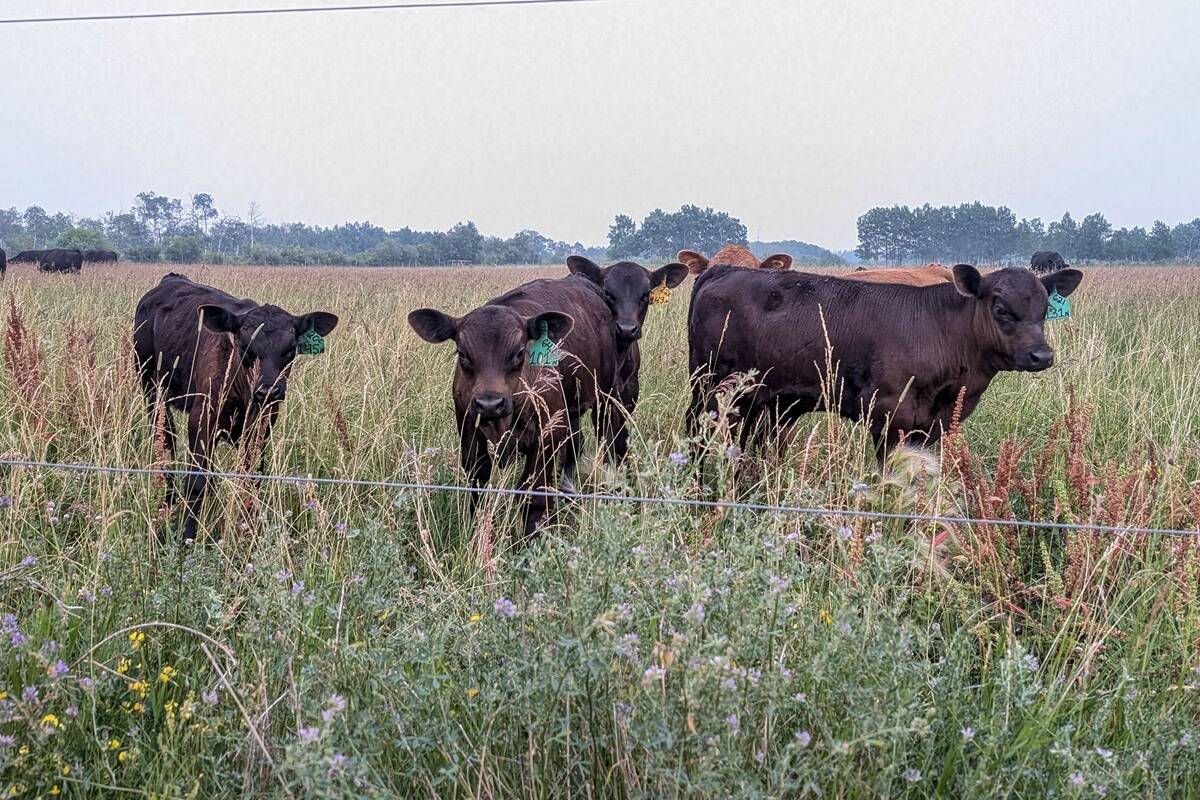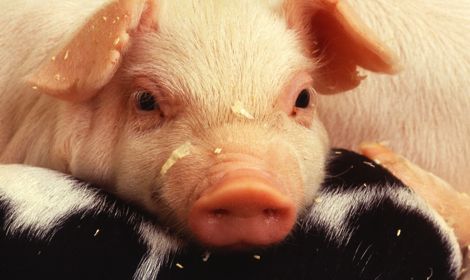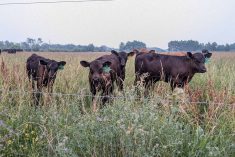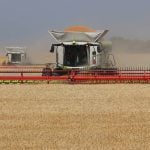Now also suspected on third farm; industry launches task force
“The reality has changed” for Ontario’s hog industry with a second, and possibly third, case of porcine epidemic diarrhea virus now found in the Chatham-Kent area.
“Since the virus is highly contagious, its presence in Canada is not unexpected and more cases are expected in the coming days and weeks,” the province said Monday.
Dr. Greg Douglas, Ontario’s chief veterinary officer, on Monday announced the second confirmed case, affecting about 15 to 20 per cent of hogs in a finisher barn — and a third possible case under investigation on a separate finishing operation in the same area.
Read Also

‘Not a happy Trump supporter’: U.S. Cattle ranchers hit by push for lower beef prices
Much like the price of eggs during the Biden administration, the cost of beef has become an emblem of the affordability crisis in Donald Trump’s America. Beef prices hit record highs earlier this year as the cattle herd shrank and consumer demand remained strong.
He again emphasized PEDv, while usually deadly in very young piglets, poses no risk to human health, nor to food safety, and “pork remains a safe choice.”
Neither operation houses the very young piglets known to be most susceptible to the virus, such as those seen on the Middlesex County farrow-to-finish operation confirmed last week as Ontario’s, and Canada’s, first case of PEDv.
The mortality rate at the 500-sow Middlesex County operation is now approaching 100 per cent among two- to five-day-old piglets, Douglas said on a conference call Monday.
The two Chatham-Kent properties house roughly 3,000 and 2,000 animals, respectively. Clinical signs of illness were seen on the now-confirmed farm at Chatham-Kent before the Middlesex case was confirmed, and the third farm reported clinical signs of illness over the weekend.
There haven’t been significant levels of mortalities at the Chatham-Kent barns, Douglas said, and the percentage of animals showing clinical signs is roughly comparable to what’s been seen in similar affected barns in the U.S.
“Regulatory instruments”
While the new cases are a concern and show that “the reality has changed” for Ontario producers, there are still opportunities for producers to protect their operations at the farm gate, he said.
“We do anticipate this will be tough on our industry,” Ontario Pork chair Amy Cronin said on the same call, noting that if the virus continues to fan out in this country without protective measures in place, it could cause up to $45 million in losses in Canada’s hog industry within a year.
“Producers are concerned, obviously,” and already have biosecurity measures in place on their farms, she said, but “at the same time, we are encouraging them to take additional measures.”
Any cases of vomiting or diarrhea in a hog herd should now be reported immediately to a farm’s veterinarian, she said, and nothing should enter a hog barn without complete cleaning and disinfection. No work boots worn outside should cross a particular point, and protocols for feed delivery should be followed.
Transport trailers used to handle hogs should be washed and disinfected between each destination at secure and clean wash bays, well away from hog farms or hog slaughter plants.
The virus was also detected last week in Quebec, in a swab test on an unloading dock at an Olymel hog slaughter plant which accepts deliveries from farms in both Quebec and Ontario.
Asked Monday whether either of the Ontario farms where the virus is confirmed have been quarantined, Douglas said “no formal regulatory instrument” has been imposed.
Provincial and federal officials have the full co-operation of the producers and their veterinarians in both confirmed cases, he said, and animals are not leaving either affected property. “We’re not concerned with either of these two farms requiring regulatory instruments,” he said.
That said, “in concert with Ontario Pork, my office is reviewing our mitigation strategies to ensure we have the right tools to limit the spread of PED.”
The virus, which leads to vomiting, diarrhea and dehydration in affected animals, has previously been seen in Europe and Asia and only began circulating in North America in April 2013, when it turned up in the U.S.
As of Jan. 18, nearly 2,400 confirmed cases have been seen in 23 U.S. states. In those cases, between one million and four million hogs are estimated to have died.
“Standardize efforts”
The Canadian Pork Council announced separately Monday it’s moving to set up a “PED Strategic Task Force” to “bring key players together to standardize efforts across Canada.”
“For the past three years the pork industry has worked hard to prepare for, and has taken preventative measures to slow viruses like PED from affecting Canada’s heard health,” council chairman Jean-Guy Vincent said in a release.
PED, he said, “poses no risk to human health or food safety but this is such a devastating production virus that producers must make it a priority, and consider preventative measures to reduce the risk of transmission.”
The task force is expected to include regulatory veterinary officials, both federal and provincial, and representatives from the veterinary diagnostic laboratory sector, along with provincial pork boards. — AGCanada.com Network
Related stories:
Fatal pig virus spreads in U.S. hog herd, Jan. 23, 2014
Piglet diarrhea virus confirmed on Ont. hog farm, Jan. 23, 2014
U.S. study finds disinfectant ineffective against PEDv, Dec. 30, 2013
















